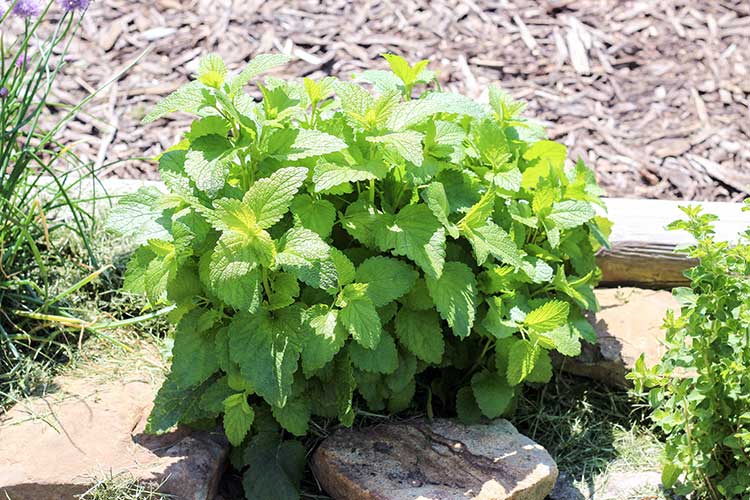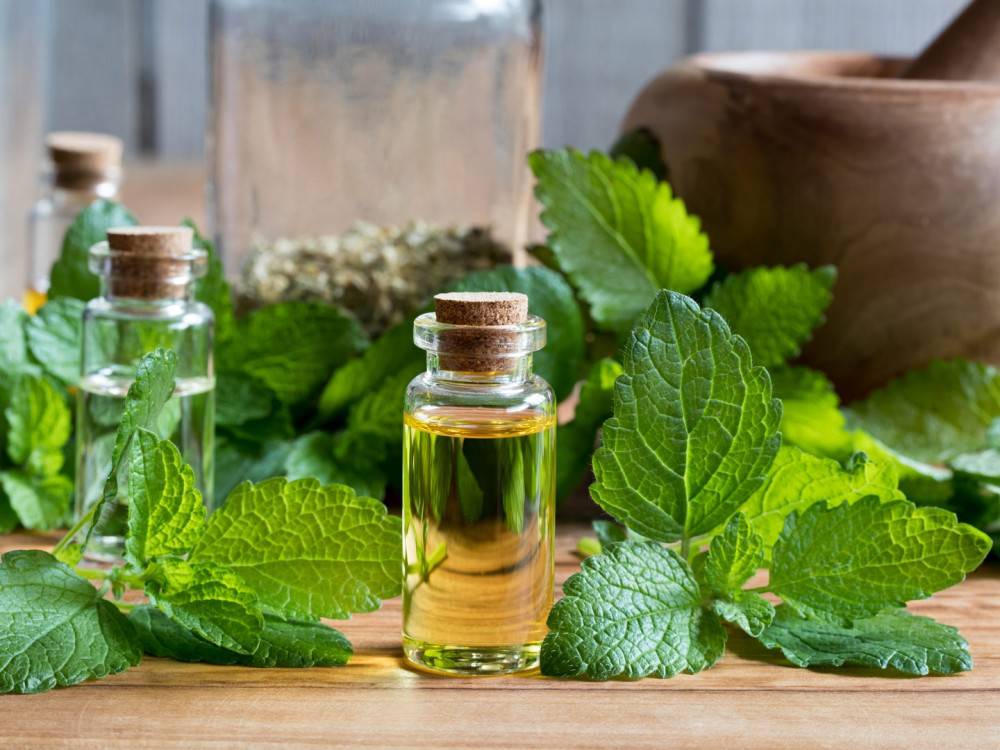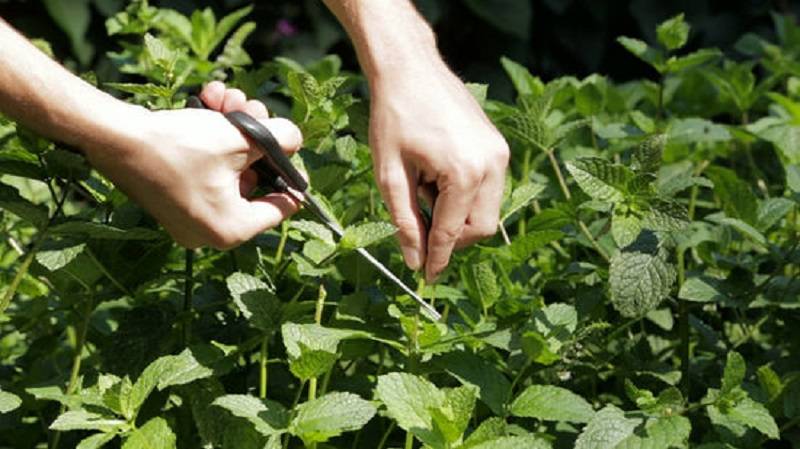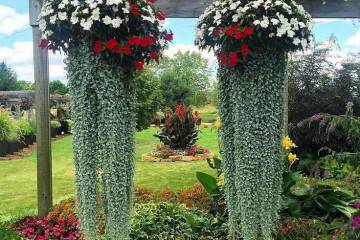Lemon melissa - growing from seeds in the country
Content:
Lemon balm has been known to man for a long time. This spice plant is famous for its aromatic and medicinal properties, thanks to which it has become widespread. Observing certain conditions, lemon balm can be grown both at home and in the country.
Lemon melissa: description and characteristics
Melissa (also called catnip) is a perennial plant from the Lamiaceae family. It is a branching herbaceous shrub that can reach a height of more than 100 cm. It has a highly branched root system. The stem is tetrahedral, covered with ovoid leaves with serrated edges. Depending on the variety, the leaves can be smooth or have a short hairy edge.
Small flowers form in the leaf axils, forming ring-shaped inflorescences around the stem. Their colors vary from white to purple with all possible pink-lilac undertones. The aroma is fresh, honey-lemon, more intense during the flowering period.
Other varieties
The plant has many varieties and varieties, the main differences of which are in a number of characteristics:
- the size and shape of the bush;
- aroma saturation;
- colors of leaves and flowers;
- resistance to cold snaps.
The Dozya variety grows most luxuriantly. The pearl is distinguished by highly serrated corrugated leaves. Frost-resistant varieties Quadrille, Freshness, Isidora, Lada and others. Decorative varieties include Pure Gold and Zolotistaya.
Medicinal properties of lemon balm
On the basis of this plant, many medicines are made, it is also used in folk medicine. Bitter in taste, with a lemon scent, the leaves and young shoots of lemon balm contain many useful substances, including ascorbic acid, carotene, essential oils and tannins.
The plant has a calming effect, promotes the treatment of heart disease, hypertension. However, due to a number of contraindications, it should be used with caution.
In addition to the above diseases, traditional medicine advises using homemade lemon balm in the following cases:
- stomach upset;
- sleep disturbance;
- a state of neurosis;
- gout.
Many people grow catnip in their backyards and even in apartments, since caring for a beneficial scented plant is quite simple.
Mint and lemon balm: differences
Melissa and peppermint are often confused due to some similarity in appearance and refreshing taste. But in fact, these plants can be easily distinguished:
- The mint has an erect, smooth stem, not similar to the pubescent branching stem of catnip.
- The height of the mint bush is noticeably higher in comparison with the catnip.
- The mint smell is distinctly menthol, and the catnip smells like lemon.
- Plants have the opposite effect on the body: mint excites, and lemon balm soothes.
- There is also a difference in habitat: mint is more common in regions with cool climates, while catnip prefers southern areas.
Lemon balm: growing from seeds
How to plant mint and lemon balm in your garden? Both plants can be easily germinated from seeds. Small grains of mint and lemon balm can be planted both in the ground and with preliminary germination of seedlings. Bushes obtained by the second method are usually more hardy and viable.
Mint and lemon balm seeds
The seeds of the two plants are almost the same. Therefore, to be sure which plant - lemon balm or mint - is planted, it is better to use purchased seed from a specialized store.
It also happens that you want to grow both plants, but there are doubts whether it is possible to plant mint and lemon balm nearby. Contrary to existing myths, they get along well next door.
Choosing the best place
A suitable place should be chosen in the shade of garden bushes or trees, but so that the sun still falls on the bush.
Excessive moisture can harm the plant, so the soil is well drained. Most suitable for germinating seeds is soil with a slightly acidic reaction. A place for planting is prepared in advance, digging, removing weeds, applying mineral fertilizers.
Step-by-step planting process
You should know how to properly plant mint and lemon balm in the ground:
- Since the end of March, a planting tank has been prepared by filling it with soil.
- The seeds are sown, deepening a maximum of 0.5 cm, and carefully moisten the soil.
- The container is placed in a well-lit place, if necessary, additional lighting is provided.
- After the amicable pecking of the seedlings, they are thinned out, leaving a distance of 5 cm between the shoots.
- For the better development of young plants, they are fed with a nitrogen-containing composition.
- After the establishment of warm weather, the plants are planted in open ground, having previously marked out a bed, on which the distance between the bushes and their rows will be at least 50 cm.
Each bush will quickly grow and begin to branch out, filling the free space between the bushes.
Lemon balm care
Cultivation includes standard agronomic measures. Loosening the soil and removing weeds will relieve the plant of possible nutrient deficiencies. Scheduled pruning of shoots every 3-5 weeks will allow you to maintain the size of the bushes within the desired limits and obtain aromatic raw materials for the preparation of various teas and teas.
Watering mode
Watering in dry weather requires quite frequent watering - up to 4 times a week. On cloudy days, watering twice a week is enough. At the same time, in order to avoid rotting of the root system, the soil around the bushes must be loosened after watering or rain.
Top dressing
The first feeding with nitrogenous fertilizer is carried out when the plants reach a height of 5 cm. Further, after each leaf trimming, lemon balm is fed with minerals and mulched with humus or compost. But at the beginning of the flowering period, it is advisable not to fertilize the plant, so as not to provoke early ripening of seeds.
When to collect mint and lemon balm
Raw materials are harvested from spicy-aromatic plants during all summer months. The exact timing depends on the region of cultivation. It is recommended to harvest the plants before flowering, when buds are formed, and in the leaves and stems the highest concentration of nutrients. The collection can be repeated up to 4 times per season.
The value of plants is given by essential oils, which are characterized by rapid evaporation. To preserve them, it is advisable to collect raw materials in cloudy weather. At the initial stage of flowering, the tops of the shoots are cut and dried in the open air, away from sunlight.
The medicinal plant lemon balm can be grown on any personal plot, as well as at home on a windowsill or on a balcony. In addition, its bushes look very attractive in group decorative plantings, delighting with flowering and aroma.



















